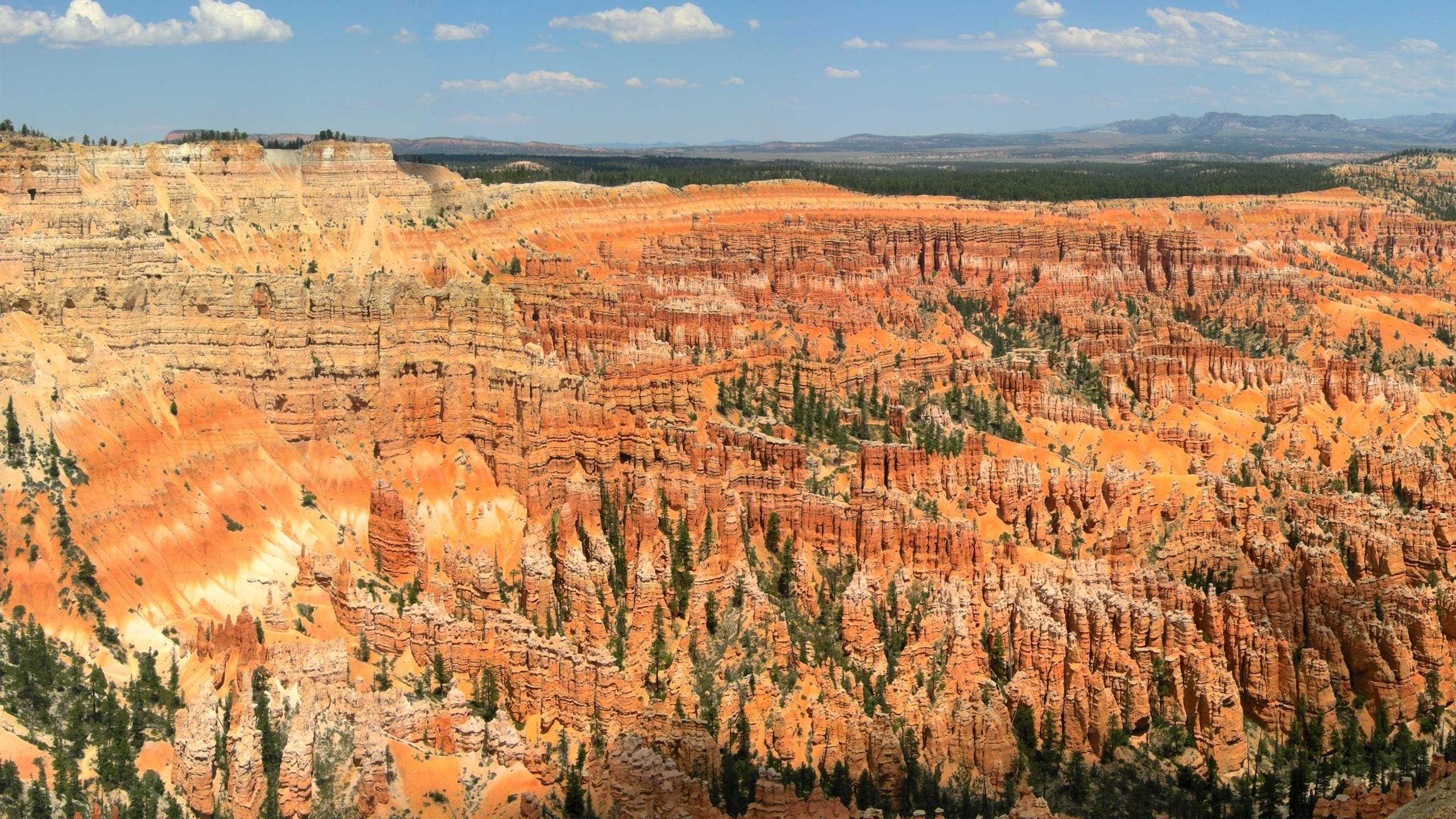About Bryce Canyon National Park
Bryce Canyon National Park is in south-central Utah. The northern part of the park is in Garfield County, and the southernmost portion in Kane County. The park encompasses approximately 35,835 acres, and the park ranges between 6,600 and 9,100 feet in elevation. Named after pioneer Ebenezer Bryce, Bryce Canyon National Park was originally established as a national monument by presidential proclamation in 1923. The park was renamed Utah National Park in 1924, and eventually the name was changed to Bryce Canyon National Park in 1928. In 1975, nearly 46% of the park (16,303 acres) was recommended to be included as a unit of the national wilderness preservation system. Much of the park is surrounded by the Dixie National Forest or Bureau of Land Management (BLM) lands, including portions of the Grand Staircase–Escalante National Monument.
The park’s most noted feature is the eroded landscape below the east rim of the Paunsaugunt Plateau. Technically it is not a canyon, but rather a spectacular series of more than a dozen horseshoe-shaped amphitheaters. The erosional force of frost-wedging and the dissolving power of rainwater have worn away the colorful and weak limestone rock of the Claron Formation into bizarre shapes, including slot canyons, windows, fins, and spires called “hoodoos.” The formations, which range from shades of red to white, are a brilliant contrast to the colorful lowlands east of the park and the timbered hillsides and plateaus to the west. The geologic story of the park is linked to the rest of the Grand Staircase region and the Cedar and Black mountains volcanic complex.
Because Bryce Canyon National Park transcends 2,500 feet of elevation, the park exists in three distinct climatic zones characterized by spruce/fir forest, ponderosa pine forest, and pinyon pine/juniper woodlands. The diversity of forest and meadow habitats provides a high degree of plant and animal diversity. Surrounded by lower elevation dry shrublands, Bryce Canyon’s highland plateau gets much more rain than the lowlands and is cooler during summer. The relatively lush ecosystem that results is in marked contrast to the surrounding arid landscape. At Bryce Canyon, more than 100 species of birds, dozens of mammals, and more than 1,000 plant species exist.
Bryce Canyon National Park is not an island; important park resources and values transcend park boundaries and are dependent on environmental conditions both inside and outside the park. The vast, panoramic views from within the park to the outlying valleys and canyons add an outstanding quality to the aesthetic values of the park. Bryce Canyon is also one of the best places to experience a truly dark night sky. These resources depend on regional air quality, soundscapes, and lighting conditions. Park boundaries are irrelevant to the migratory hummingbirds or nesting peregrine falcons; Rocky Mountain elk, mule deer, and pronghorn cross through the plateau forests and meadows within and beyond the park; other animals have adapted to occupy the distinctive erosional features of the amphitheater and adjacent habitats.
The park’s cultural resources and values are also expressions of the region’s diverse human history. For thousands of years, native peoples passed through the Bryce Canyon area, leaving subtle evidence of their presence in the archeological record. More recent tribal groups such as the Southern Paiute, as well as the European American pioneers who settled nearby, drew sustenance from the area’s resources. In the early 20th century, the scenic splendor of Bryce Canyon inspired park developers to integrate the built environment with the natural setting. In perpetuation of this enduring legacy, modern visitors and the descendants of those who came before continue to draw inspiration and make personal and cultural connections to the landscape.
Source: Foundation Document – Bryce Canyon National Park
Fast Facts:
| Date the Park was Established: | February 25, 1928 |
| Park Area (as of 2019): | 35,835.08 acres (145.0 km2) |
| Recreational Visitors (2018 Total): | 2679478 visitors |



